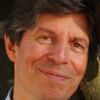
Through pure determination, Paco de Lucía has become that rarity among artists: both icon and iconoclast.
It's been more than fifty years since Paco de Lucía taught himself guitar and stunned the world of flamenco as a child prodigy, then went on to develop peerless technique and controversially reshape the boundaries of the genre.
At 64, he has released a live two-CD album, Envivo, from his tour of Spain and is touring the United States with the same ensemble, showcasing his incredible playing and his career-long efforts to expand the vocabulary of flamenco.
De Lucía was born in the south of Spain, surrounded by the sounds of flamenco. A shy boy, he was introduced to the guitar by his father, and was soon practicing endlessly to develop his technique. At 11 years old, he debuted on the radio and was given a special citation at a competition soon after.
After a few years garnering praise as a flamenco guitarist, he began what was to be a lifelong search to improve and expand his playing. In what was heresy among flamenco purists, he performed with top jazz musicians, such as John McLaughlin, Wynton Marsalis and Chick Corea.
"I suffered a lot at the beginning," he recalled of the criticism, "Until the moment I realized I know what I am doing and I know why I do this.
"I always want to grow as a musician," he continued. "I have never been in a school to learn harmony... I have been playing by ear my whole life. I thought in that moment if I play with jazz musicians I would grow as a musician. I could learn harmonically things that would help me in my flamenco way."
In 1968, de Lucía met and first heard the flamenco singer Camarón de la lsla. "Discovering Camarón was, for me, like the Messiah, like when God come to the Earth. It was something incredible, a magic artist. Nobody understood him at that time... I never listened, in my whole life, to something like that."
They collaborated on several albums over the next years, until Camarón's untimely death in 1992. "We started to create a new language in the flamenco. From that moment until now, all flamenco was different... We broke with all the tradition without letting go of pure flamenco."
His latest double-CD is his first live album in 20 years. "Usually I'm not happy with my recordings but this recording I had a good time. I discovered that the music has to be live. I don't believe anymore in the studio."
He praised the instrumentalists for their ability to set a great rhythmic base for his playing. "Rhythm is very important in flamenco. When you have people with a very good rhythm you can relax and float... [otherwise] you have to fight to play."
Though these days he suffers from pain in his back, legs and arms, he said is able to forget the pain once he is engaged playing his beloved guitar and music on stage.
"When you are young, you fight to be recognized, fight to be loved by the people, you want to be the best one," he said, adding that gaining recognition has meant "losing the stimulus" of that youthful urge to predominate. With age and maturity, he said, he has become a much more "refined" player even if he plays fewer notes than when he was young.
"Now," he said, "I play more with my heart, less with my fingers."
Paco de Lucía performing with the late Camarón de la Isla
Paco de Lucía with John McLaughlin and Al Di Meola
